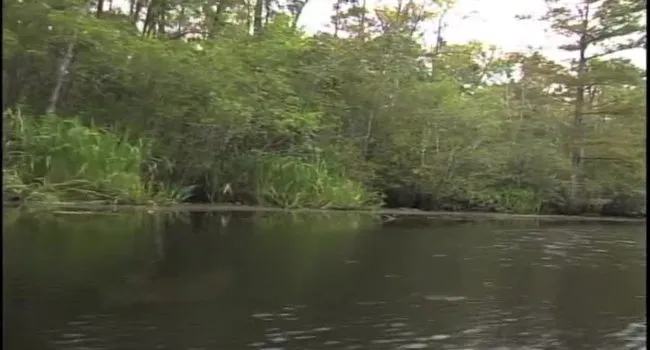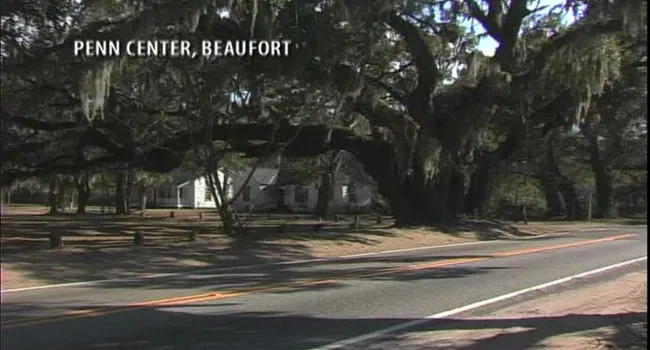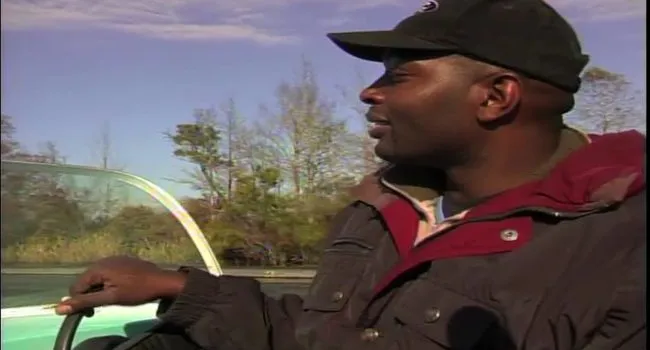00:01
began exploring ways
to potentially see
00:05
if there's a way we could
somehow buy the island
from the owners.
00:13
We met with Spence Wise,
who represented Mr. Milliken,
00:17
with Sydney Fletch,
who represented Craig Wall.
00:21
We sat down, and we had
a heart-to-heart with them,
00:24
and we said, "We'd really like
to explore the possibility
00:28
of finding public funding
to buy the island."
00:32
And Spence said, "Roger Milliken
never sells land...never."
00:39
(narrator)
It seemed they had
reached a dead end.
00:43
Then they learned of a man
who might be able to help them.
00:47
A local Nature Conservancy
board member
00:49
directed them
to Rick Webble,
00:51
a well-known
landscape architect
00:53
and a member of
the Conservancy's
Long Island board.
00:57
Webble had
Mr. Milliken's ear
01:00
and was willing to talk to him
about Sandy Island.
01:03
(Beach)
Ultimately,
the best outcome
01:06
would be to purchase
the island in its entirety,
01:11
and Rick had said,
"Well, I will do what I can do
01:16
"to make that case
to Mr. Milliken
01:19
and see what
I can come up with."
01:22
(narrator)
In the meantime,
a highway entered the picture.
01:26
The South Carolina
Department of Transportation
01:29
was building a major new
road west of Myrtle Beach--
the Conway Bypass--
01:33
on land that had about
a hundred acres of wetlands.
01:38
To build bridges
over them
01:40
would cost the state
millions of dollars.
01:43
One way to save money would be
to fill the bypass wetlands in
01:48
and save others by a process
called wetlands mitigation.
01:54
Buck Limehouse
was chairman
01:56
of the South Carolina
Department of Transportation.
01:59
Our methodology at that time
to move these projects fast
02:03
was to stick
the money in escrow
02:06
and move on
and then let the people
02:08
who are interested
in conservation
02:11
and wetlands preservation
and other type of, uh...
02:16
mitigation projects,
let them help us identify it.
02:21
(narrator)
The Department
of Natural Resources
02:23
created
the Winyah Bay Task Force
02:25
to identify wetlands
to buy for mitigation.
02:28
Joe Carter was
the task force chairman.
02:31
(Joe Carter)
I was assured by DNR
that all we needed to do
02:34
was quantify and qualify
the natural resources
02:37
and thereby define
a geographical area of concern.
02:43
Well, before we could start
quantifying and qualifying,
02:46
the members of the task force
and I polled each member.
02:51
They agreed,
to a man and to a woman,
02:53
that Sandy Island
needed to be protected.
02:56
(Banks)
So the Fish
and Wildlife Service,
02:58
along with the other
regulatory agencies,
03:00
worked with DOT and the
Federal Highway Administration
03:03
to explore the entire route
of the Conway Bypass
03:07
and see if we could help them
reduce the amount of bridging.
03:11
As it turns out, we were
able to reduce it by 5 miles,
03:15
which amounted to
about a $75-million savings
03:19
for the Department
of Transportation.
03:21
For the wetlands that
would still be impacted,
03:25
the DOT put $5 million
into an escrow account
03:29
that would be used
to buy mitigation lands.
03:32
(narrator)
Sandy Island was the jewel,
03:35
the ideal choice
for wetlands mitigation.
03:38
But the owners
still said no to a sale,
03:41
and the struggle to protect
Sandy Island seemed stalemated.









